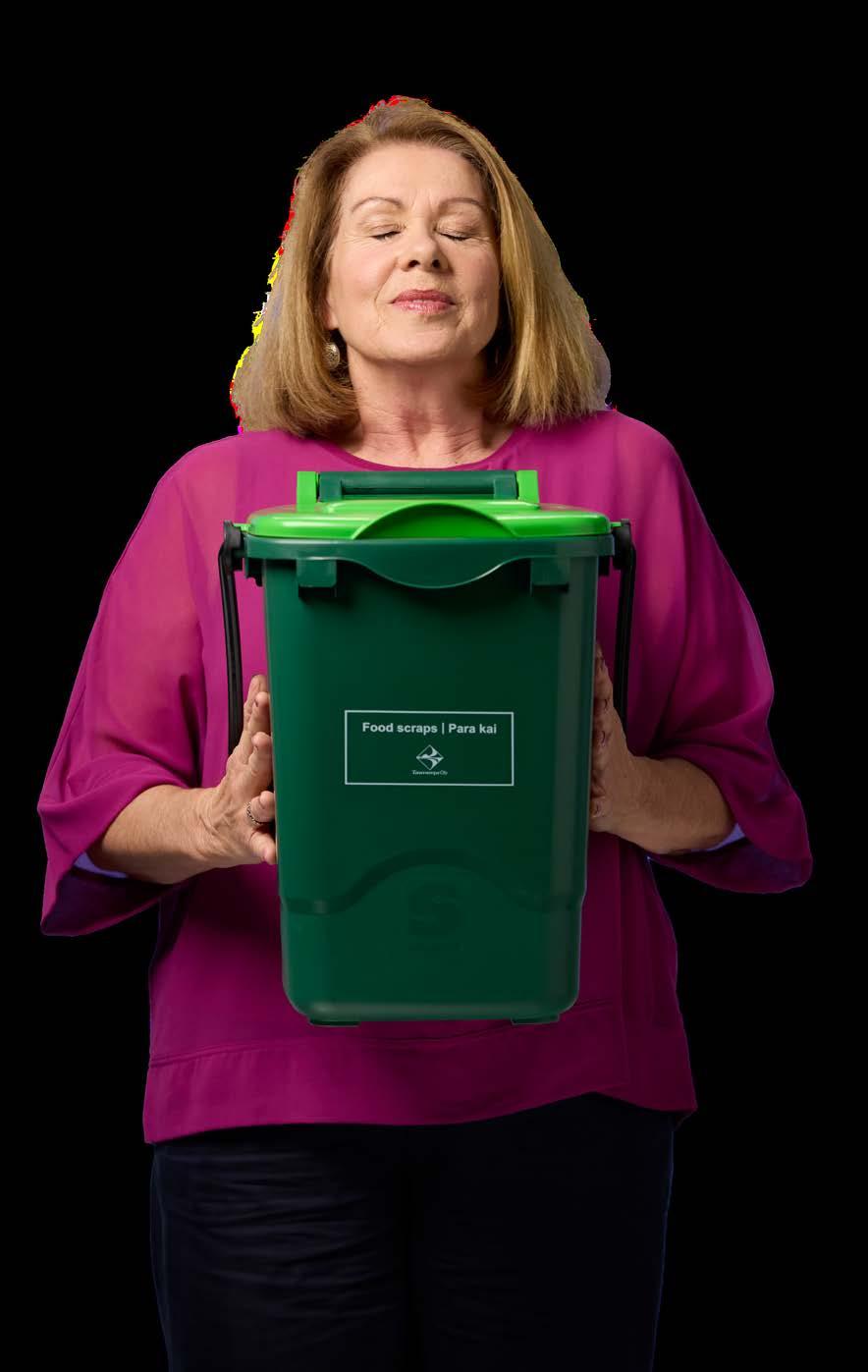ACTION STATIONS!
Basestation celebrates a decade of assisting numerous Tauranga SMEs Page 6
TAX FACTS & CONSTRUCTION
Avoiding costly infrastructure tax shocksDeloitte’s delivers valuable advice Page 8

Basestation celebrates a decade of assisting numerous Tauranga SMEs Page 6
Avoiding costly infrastructure tax shocksDeloitte’s delivers valuable advice Page 8
PMG strikes the real oil regarding large format real estate Page 13


Business leaders and councillors are cautiously optimistic about local projects making the government’s much celebrated Fast Track Approvals (FTA) Bill list. The bill aims to speed up regional housing and infrastructure developments.
Of the 149 projects making the cut, the Bay scored a dozen
approvals seeing the region ranked firmly in the middle on a population per project basis – 29,500 people per project. The local projects focus on aspects businesses have long called for, including roading, port infrastructure and housing in the Western Bay of Plenty Council area.
Standout projects include a 340 hectare housing and industrial development, set to feature up to 3000 new homes near Bell Road, Pāpāmoa, as well as a 132ha development at Tauriko.
Among the roading projects on the list is the four lane, second stage of Takitimu North Link (TNL) from Te Puna to Omokoroa
and the State Highway 29 (SH29) to Tauriko network connections project.
Port of Tauranga (POT) has also claimed a spot. Although part of its extension project remains mired in the Environment Court, POT has gained a listing for the entire project while the consent
> Continuedonpage3

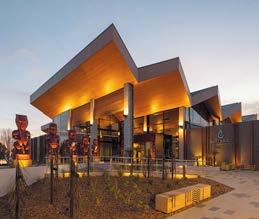














process continues to play out.
Priority One CEO, Nigel Tutt, told Bay of Plenty Business News (BOPBN) there were no surprises on the list with housing and core infrastructure projects needed and expected.
“Projects such as the TNL stage two are, however, still dependent upon funding, but there is definitely a need there for the region’s wellbeing.”
The SH29 project through Tauriko was also well overdue given the significant growth already happening there, Tutt said.
Bay of Plenty Regional Council chair, Doug Leeder, welcomed the housing projects, including the Bell Road plans, but cautioned that such projects were yet to be granted full approval.
“The Bell Road [project] is a particularly low-lying and flood prone area. Also, it needs to fit with the region’s Smartgrowth plan, and it is not in the planning forecasts for Smartgrowth development, so that will have to be accounted for.”
Bell Road is being developed by Tauranga’s Bluehaven Group, the company behind the Golden Sands subdivision in Pāpāmoa.
A New Zealand Transport Agency (NZTA) spokesperson
emphasised that, while it does fast track projects, the FTA relates to consent but not to funding.
“The Government Policy Statement on land transport 2024 introduces a new expectation for NZTA to consider tolling to support the construction and maintenance of all new roads, including the Roads of National Significance,” the spokesperson explained.
Additionally, NZTA confirmed work to replace Omanawa Bridge was progressing with the usual resource management pathway expected. The bridge replacement represents the first phase of the Tauriko West SH29 corridor project, which is set to begin in 2025.
The TNL second stage project already has route protection in place with more information available during the coming months.
Failing to include these two major roading projects in the FTA would have been a major oversight given that they are roads of national significance, Western Bay of Plenty’s mayor, James Denyer, said.
“FTA does not necessarily mean all projects are approved, but it does bring the processes together quicker. They are projects clearly signalled by the gov-




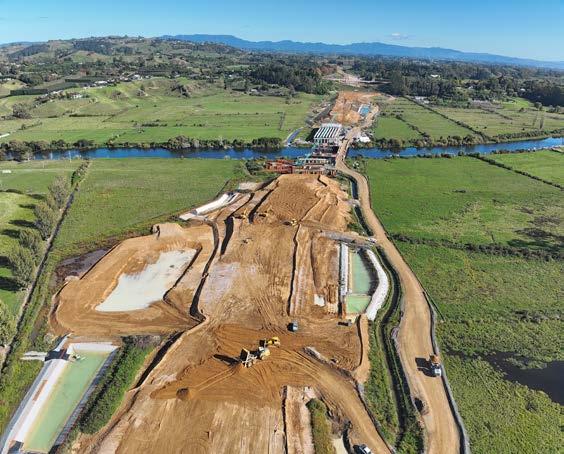
ernment [to be] priorities.”
The Port of Tauranga (POT) advised BOPBN that the Environment Court has approved part of its expansion project, a 285 metre berth at Sulphur Point. Although POT submitted the entire project for fast-track listing, a decision about whether or not (and which) parts of its consents to push through will not be made until final legislation and an approvals timeframe is known.
In early October, the port’s CEO, Leonard Sampson, expressed frustration about POT
being forced to turn away ships due to red tape delays. In February, its executives warned capacity was running out, and the port now lacks the ability to accept new services from Europe or the USA.
Kawerau also gained a boost with stage one of Foresta’s pine chemicals and wood pellet plant making the FTA list. This project aims to process stumps and forest slash from PF Olsen forests in the region, turning them into high value chemicals and pellets for wood fuel-burning plants.



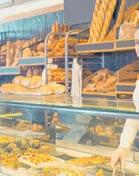


A Foresta spokesperson said fast-track approval sees the project recognised as one of regional and national significance.
“Our operational plan for the first manufacturing facility at Kawarau will provide 73 jobs across various roles with job creation expected to grow as the project scales. The number of direct and indirect employment opportunities will increase in tandem with our planned development phases,” the spokesperson advised.
“Our scalable manufacturing process allows for the establishment of additional facilities close to forests across New Zealand. With a total of 10 factories currently planned, we could effectively eliminate the need for coal to be burned domestically and have surplus production available for export to Asia.”
In addition, Manawa Energy made the list with two projects requiring re-consenting to continue – the Kaimai Hydro-Electric scheme and, south of Murapara, the Wheao Hydro-Electric scheme. The company’s CEO, Clayton Delmarter, said these complex schemes were due to lapse in 2026, and Manawa Energy benefits from a ‘one stop shop’ approach signalled by the fast-track bill.
ADVERTISING
Pete Wales, Mob: 022 495 9248
Email: pete@bopbusinessnews.co.nz
EDITORIAL
News Releases/Photos/Letters/ New Appointments
editor@bopbusinessnews.co.nz
PRODUCTION
Copy/Proofs/Graphic Design
Clare McGillivray
Email: clare@bopbusinessnews.co.nz
GENERAL ENQUIRIES
info@bopbusinessnews.co.nz
Bay of Plenty Business News has a circulation of 8000, distributed throughout Bay of Plenty between Waihī and Opotiki including Rotorua and Whakatane, and to a subscription base.
PUBLISHER
Bay of Plenty Business Publications
PO Box 155, Tauranga 3144
Bay of Plenty Business Publications specialises in business publishing, advertising, design, print and electronic media services.
In case you missed last month’s edition Scan to subscribe www.bopbusinessnews.co.nz


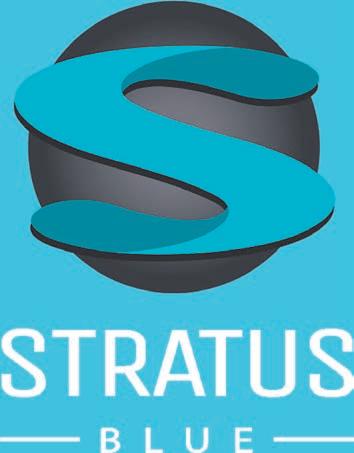
Ihesitate to again refer to the appalling genocide taking place in Gaza, but feel Israel’s accelerating carnage simply cannot go without further comment. One of the most tragic outcomes of this horrific and one-sided attempt to destroy the Palestinian people and their homes, their hospitals and their schools, sadly, will be that the huge injustices done to European Jews during the Second World War and prior may end up being overlooked by history.
The strong pro-Israel Zionist lobby fostered by Israel and the US, as it sought to create a safely pro-Western space in the Middle East, has resulted in the tail wagging the dog. By the time this article goes to print, the outcome of the US elections will be known – clearly Israeli Prime Minister, Benjamin Netanyahu, is attempting to get as much of what he wants before then.
We are already seeing the majority of world public opinion turning against Israel’s rampant attacks in Gaza. The latest expansion of the genocide, which has seen
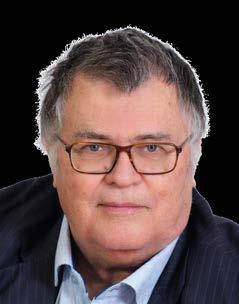
Israel attempt to occupy its neighbour Lebanon with an inevitable accompanying cost in civilian lives, is even more appalling to me.
We have been here before. This is not Israel’s first attempt to subdue its neighbours.
Leaving to one side its continuing attempts to humiliate and worsen the lot of the Palestinian people confined to the Gaza strip, and in the so-called ‘occupied’ West Bank, Israel’s previous effort to occupy Lebanon turned into a long-term invasion and Israel was, eventually, obliged to withdraw.
For those of us who can still summon the courage to count the cost, Israel’s attacks
on Gaza have resulted in more than 40,000 civilian casualties, unknown numbers still buried beneath the ruins, unremitting attacks on hospitals, homes and educational facilities, and a continuing effort to deny food aid to civilians trapped in Gaza.
Meanwhile, the self-proclaimed ‘most moral army in the world,’ has allowed soldiers to post videos online in which they glorify attacks on defenceless civilians and destruction of homes and infrastructure.
The recent killing of Hamas leader, Yahya Sinwar, could lead to the freeing of Israeli hostages and a ceasefire. However, history suggests Israel and its enemies won’t take advantage of it – as Politico magazine recently stated, noting the assessment of veteran former US diplomat and Middle East veteran, Ryan Crocker: “One thing I’ve learned over years, especially in Iraq and Afghanistan, is that the concept of the defeat of an adversary only has meaning in the mind of that adversary,” Crocker said. “If
that adversary feels defeated, he is defeated. If he doesn’t, he’s not.”
Despite the genocide in Gaza, amazingly its people do not yet seem to feel defeated, despite clearly yearning for respite. I can, to an extent, sympathise with Israel’s attempts to seek some redress for its own centuries of abuse and exploitation. But, very sadly, this has resulted in Israeli immigrants, many of them American, essentially in a land grab on Middle Eastern land.
The Israeli leadership and much of its media are portraying a view of Israel as a plucky little survivor in a hostile Middle East. In truth, there is no excuse for anybody in Israel being unaware of what their leadership has been doing in their name, with major US support – it’s not as if they have even made any secret of it. (1)

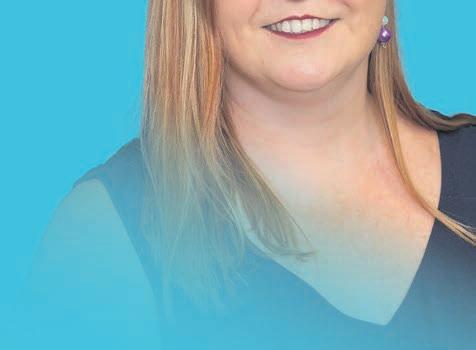
Exercising the top two inches, good sports have teamed up to give locals a head start. A recent partnership will grow sport locally, Chad Hooker from Bay Venues expects.
“We are so excited to work alongside the University of Waikato as Tauranga continues to develop. As our population grows, community connection has never been more important and our sports and fitness facilities play an important role.”
Through the partnership, the university scores naming rights to a six-court indoor sport facility at Mercury Baypark Arena with a new indoor sport and recreation centre also under development on Cameron Road. Students will be able to access the facilities, the university’s Alister Jones con-
firms. “Our ongoing presence in this city supports our vision to contribute to growth and prosperity… partnering with great community facilities is just one way we are doing this,” he said.
“I’m excited at the possibilities this new partnership offers and I look forward to our students being able to enjoy the access to facilities and [being] involved in new campus events delivered alongside the Bay Venues team.”
The first new indoor community sport facility in Tauranga since Mercury Baypark Arena opened more than a decade ago, the Cameron Road venue will host a wide range of sports including: volleyball, badminton, basketball, pickleball, table tennis, sports for disabled people, netball and so much more.
Kiwifruit is synonymous with the Bay, but so is helping our fellow Kiwis. Pitching in to assist the New Zealand Food Network (NZFN), Seeka has found a way to ensure good produce won’t go to waste.
“They had everything set up making it easy to assist them,” Lloyd Franks from kiwifruit producer, Seeka, said. “It’s great to see fruit benefit people in the community, especially given kiwifruit’s nutritional benefits.”
Donating fruit that doesn’t meet retail grade for international or local markets has become part of the Paengaroa-based grower’s wider drive towards sustainability.

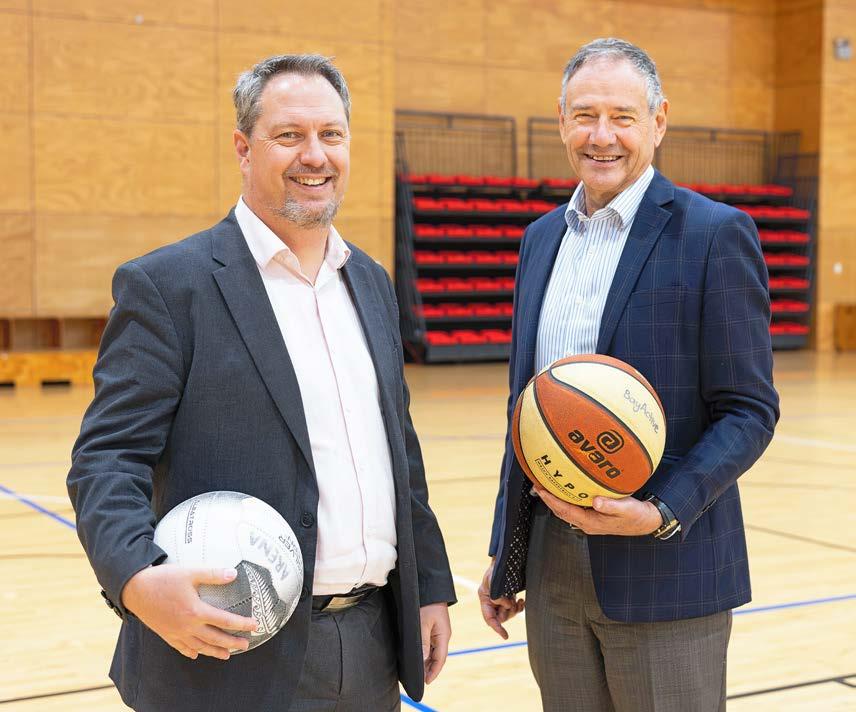
ABay of Plenty-based business has been showing American farmers how they may live long and… Prospr. A multi-use, high tech vehicle for agriculture, Robotics Plus’ Prospr draws on AI to tackle orchard and vineyard tasks, the company’s CEO, Steve Saunders, explains.
Aiming to improve food security nationwide, NZFN approached Seeka earlier this year. Fruit was donated from July through until September.
“We collect, sort and redistribute bulk surplus food nationally and get it to where it’s needed most,” Sophie Percy from NZFN adds. “Establishing this donation relationship with Seeka has been fantastic. It has meant a great deal to the communities supported by our network.”
“Fruit loss is a natural part of the process, [so] our mission is to ensure that as much fruit as possible is eligible for the retail markets. Seeka is actively exploring sustainable solutions.”
“The big challenge for growers globally is how to consistently produce more food sustainably while reducing their environmental impact. Prospr [is] a robust autonomous vehicle with unique modular architecture and all-day running that empowers growers to adapt to the jobs they need to do in an ever-evolving agricultural landscape.”
Adapting to various crop types, growing formats and heights in addition to other applications, Prospr significantly increases efficiency, Saunders reveals.
Since its launch at last year’s FIRA USA event (focused on

autonomous farming and agricultural robotics) Prospr has already been hard at work on orchards and in vineyards in the US, Australia and New Zealand. Making waves again at this year’s event late last month, it was put through its paces showcasing key functionalities.
Prospr is intended to undertake tasks while enhancing environmental sustainability, reduc-

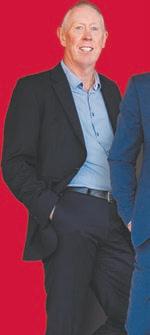

ing cost and reliance on machine operators, Robotics Plus’ Dr Alistair Scarfe adds.
“We designed Prospr to alleviate labour challenges and drive efficiency, sustainability, safety, and precision for vineyards and orchards… we’re excited to showcase Prospr’s autonomous capabilities, including its advanced artificial intelligence capabilities and user-friendly interface.”



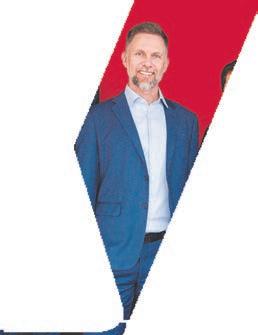
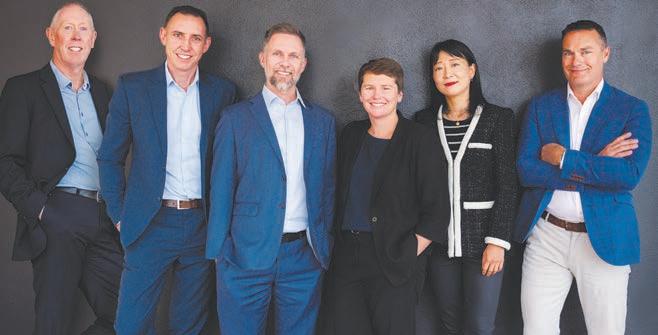

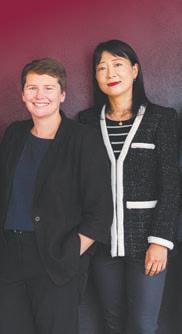




Basestation is thrilled to announce its 10th birthday, marking a decade of providing a vibrant, collaborative workspace for entrepreneurs, freelancers, and small businesses in Tauranga. Founded with the vision of creating a supportive environment for local professionals, Basestation has transformed the way people work in Tauranga providing modern amenities, flexible options, and a variety of event spaces designed to encourage creativity and innovation. We’re proud to have supported 600 residents over the last 10 years.
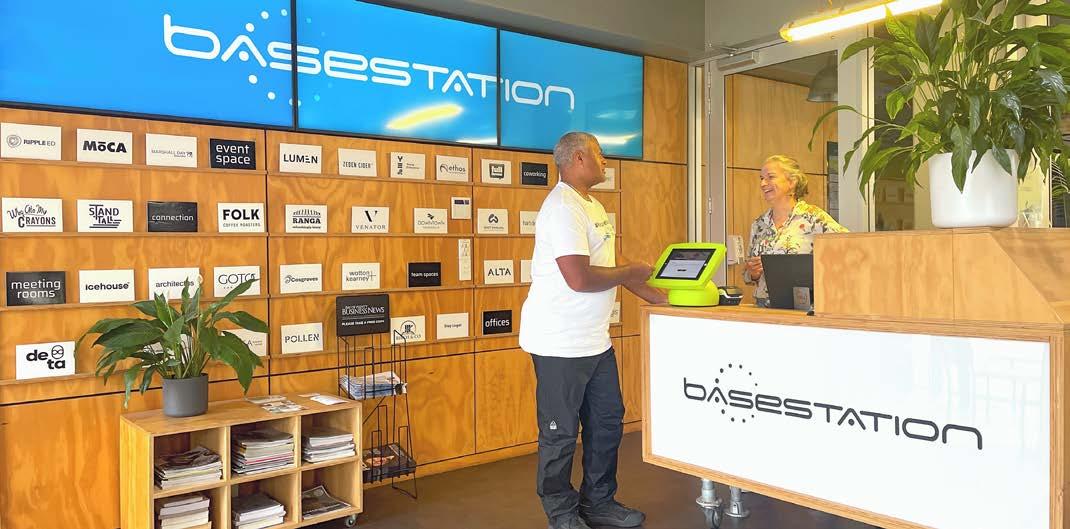
“Over the past ten years, we have witnessed incredible growth and change, not only in our business but in the local community. We’re proud to have created a space where people can authentically connect, collaborate, and thrive. Our community is at the heart of everything we do, and we look forward to continuing to support their journeys.”
Steven Vincent, Co-Founder
We’re often asked to provide a cost comparison for setting up and leasing a private office vs coworking at Basestation. Worth noting: Basestation also offers private offices for up to eight people within the building.
Before diving into the direct cost comparison, let’s consider the checklist of tasks needed when setting up a new office. Think about the time and resources needed for finding a property, arranging fit-outs, managing utilities and signing a long lease. For many this list alone highlights the simplicity and flexibility Basestation offers as an appealing alternative.
Basestation takes care of everything on the checklist for you.
If needed, we are able to provide more details around the key benefits:
• Lower overheads: Only pay for the desks you need, giving you the flexibility to expand and contract as your team size changes.
• No long-term commitment: Traditional leases often require a commitment of three to 10 years. At Basestation choose flexible terms, pay monthly or weekly.
• Zero capital outlay for setup: Setting up an office requires significant initial expenses, which could be better invested directly into your business.
With Basestation, there are no setup costs – just walk in and start working.
• Shared resources: Full access to ongoing shared amenities, such as printers, meeting rooms, and kitchen facilities, reducing the need for individual purchases. Utility costs such as electricity, internet, and water are included in your single, all inclusive invoice.
Basestation has done the hard work
– setting up the physical office space, arranging all the services, and creating a vibrant community – so your business can focus on its core goal.
CHECKLIST OF WHAT YOU WON’T HAVE TO DO BY CHOOSING BASESTATION
Find a location
Negotiate a lease
Pay a bond/security deposit
Hire a solicitor to review the lease
Design the office layout
Hire contractors for fit-out
Get building consents/permits
Choose, order and install furniture
Set up utilities (electricity, water, etc.)
Install internet and Wi-Fi
Buy and set up computers and IT
Install a phone system
Create a mail and courier system
Set up fire alarms and smoke detectors
Set up a security system (alarms, CCTV)
Hire a cleaning service
Set up a kitchen or break room
Buy kitchen appliances and supplies
Set up a reception area
Hire a receptionist/admin staff and more...
Bevan Wait Ranga Alcoholic Gingerbeer

“The community feel at Basestation is incredible, and the regular events always keep things fresh and engaging. It’s a place where ideas grow, collaboration happens naturally, and every day brings new opportunities.”
Genevieve Whitson Downtown Tauranga
Resident

“I love being at Basestation. There is such a diverse range of people and I feel like everyone is super friendly. The shared spaces bring people together, I’ve got to know lots and lots of different businesses here and all sorts of creative entrepreneurial innovative things happening that I wasn’t even aware of.”
Andrew Mahon MOCA
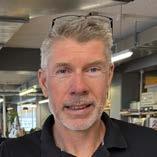
“I had the pleasure of hot desking at Basestation back at the start. I left when my job changed but returned a few years later with a different business and a team of people. The fundamentals of community, flexibility and facilities have not changed over the years. The first is still the best! Congratulations to Steven and team.”
If you’ve never tried coworking at Basestation before, this coupon entitles you to experience a hot desk at Basestation during November 2024. Book online or call 0800 000577. T&Cs apply.

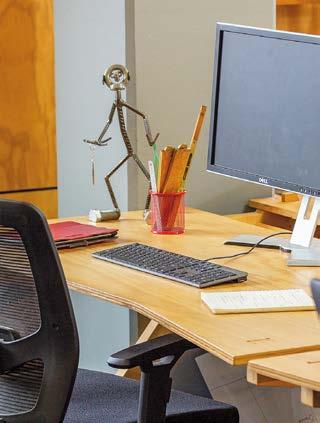


Whether we’re surfing the waves of the World Wide Web or navigating complex commercial agreements, it pays to play it safe online.
Cybersecurity Awareness Week may be over for another year but, once again, it instigated discussions about enhancing digital safety. The frequency of phishing emails has surged dramatically, so if you haven’t encountered one yet, it’s likely only a matter of time.
Recently, a friend shared an unfortunate incident where they faced financial hardship after assisting someone with an ‘unexpected loan’. I questioned why they would lend money if they
couldn’t afford it – they clicked on a malicious link leading to unauthorised withdrawals from their account until the bank intervened. This incident serves as a vital reminder to exercise caution when dealing with email links, particularly those from unknown sources.
It is prudent to avoid clicking embedded links even in emails that appear legitimate. Instead, visit official websites directly and input necessary information there to verify the authenticity of any payment request and to ensure funds are directed correctly.
There are many instances when emails and texts appear to be from legitimate sources, such as NZ Post regarding parcels, NZTA for unpaid tolls, or subscription services identifying expired credit cards or overdue accounts. These can be deceptive, but a cautious approach can help mitigate
risks. When in doubt, contact the service provider directly.
It is also crucial to examine the senders’ email addresses. Scammers often use aliases that appear legitimate. To verify the authenticity, click once on the address for full details or right click to check its properties. If the email is confirmed to be fraudulent, block the address to prevent further communications.
Another safeguard is to use a separate card for online purchases, one linked to an account with a limited balance sufficient only to cover the intended purchase. This approach minimises potential financial losses should your card be compromised.
In the unfortunate event of falling victim to hacking, contact your bank promptly to block your accounts and prevent further unauthorised transactions. Do not feel embarrassed as such incidents can occur to anyone.
Cybercrime cost the global economy approximately $13 trillion in 2023 and it’s projected to rise to $20 trillion by 2025, so it is essential to remain vigilant.
The importance of strong, unique passwords for all accounts cannot be understated. Use passphrases or random words combined with numbers and special characters.
For instance, a phrase such as ‘many hands make light work’ could become ‘MhMlw2511%’ by including an acronym, uppercase letters, adding a number and a special character. Another method is using the initials of children’s middle names, or a similar memorable prompt that will be cryptic to everyone except you.
Avoid using the same password across accounts – once one is compromised all are at risk. If remembering multiple passwords is challenging, a password

BY KATE MURDOCH
management system can provide secure storage.
As mentioned, it is essential to prioritise digital safety by avoiding links in emails and visiting official websites directly instead, verifying email addresses, using unique passwords and considering a separate account for online purchases. Cybercriminals often exploit a sense of urgency, so take your time, think critically and seek advice from professionals or trusted friends if in doubt. By staying vigilant, we can protect ourselves and our loved ones from cyber threats.
Kate Murdoch is Chief Operating Officer at Stratus Blue. She can be contacted at kate@stratusblue.co.nz
Tauranga City Council’s 2023/24 Annual Report confirms challenging times ahead as the council works to meet the city’s infrastructure needs.
Local government organisations across the country are facing tough choices as they struggle to balance high capital investment costs and community ability to fund the work involved while the recession exacerbates rates affordability. In Tauranga’s case, that will mean some difficult decisions are ahead to ensure that we live within our means and keep our balance sheet in good shape.
Key financial results for the business community include:
• Capital expenditure and net debt were both a little higher than budgeted for the year –$418 million (2023/24 Annual Plan Budget $398m) and $1.07
billion (2023/24 Annual Plan Budget $1.05bn) respectively
• Operational revenue and total rates were also slightly above budget – $407 million (2023/24 Annual Plan Budget $397m) and $295 million (2023/24 Annual Plan budget $291m) respectively
• Operational expenditure was around 10 per cent above budget – $492 million (2023/24 Annual Plan Budget $447m)
• Council’s debt-to-revenue ratio was $218%, well under the Local Government Funding Agency limit of 290%
• The value of the council’s total assets was $7.82 billion, up approximately 4% on budget
• An operational loss of $85 million
In the light of these numbers, there’s clearly a lot of work to do to deliver on our ambition to
make Tauranga the best city in New Zealand while ensuring our rates are affordable. So, our ability to leverage our relationships with central government and our key city and regional stakeholders will play a critical role.
Among the many non-financial highlights for the 2023/24 year were: progress towards enabling housing development as well as intensification provisions in the new City Plan and commencement of the Te Manawataki o Te Papa transformation of the city centre.
Transport network improvements include: the completion of Cameron Road stage one, a start to construction of the Pāpāmoa East Interchange and upgrades to SH29 now underway to enable the Tauriko West growth area. In addition, there has been development of plans for Fifteenth Ave to
Welcome Bay Road as well as the Connecting Mount Maunganui project.
Elsewhere, we’ve seen plans advance for a state-of-the-art marine research and education facility at Marine Park (Sulphur Point) with the council and the University of Waikato having signed a lease agreement. Facility improvements are set for active reserves’ facilities at Mercury Baypark, Blake Park and the Gordon Spratt Reserve pavilion, and the Omanawa Falls safe access project has been completed.
From an environmental perspective, more than 50% of all household kerbside waste is now being either recycled or composted, and the planting of more than 300,000 native plants as part of the restoration of the Kopurererere Reserve is encouraging.
Soon after the end of the
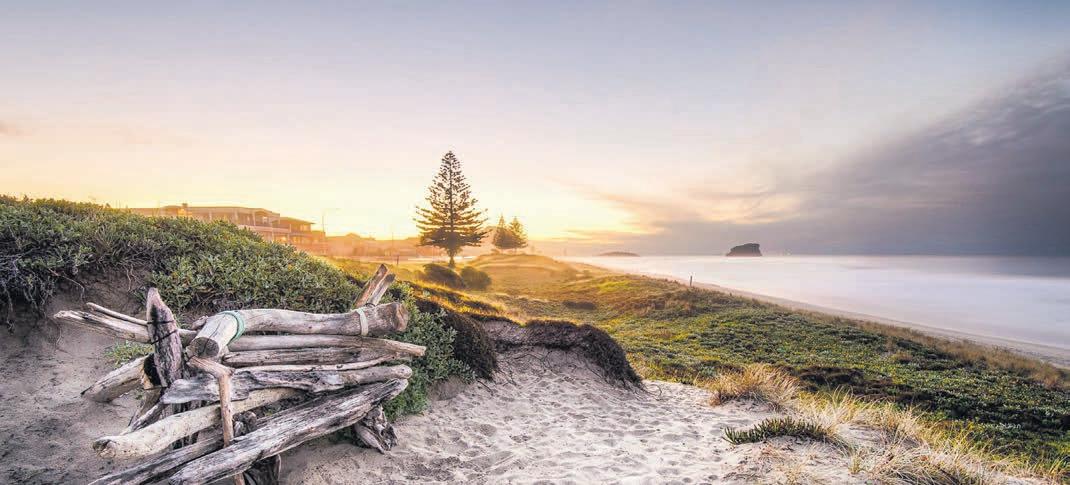
financial year, the governance of the council by commissioners was concluded with my election as mayor alongside nine ward councillors. The newly elected members are all firmly focused on delivering great outcomes and value for money for ratepayers –we’ll be working in collaboration with the council executive team and staff to achieve these goals. I look forward to reporting on our progress in the 2024/25 Annual Report.
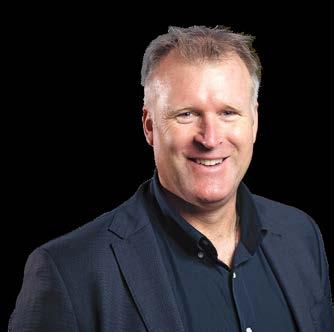

Some surprises are welcome but, generally, tax shocks are not! To avoid nasty surprises, planning and obtaining the right advice is vital, whether you run a new and growing business or a more established organisation.
In keeping with the infrastructure theme of this month’s edition, it is timely to look at some of the ways in which tax can affect the outcome of such projects. While tax should never be the main driver in business decisions, it is important to be aware of the tax consequences of various options in relation to a project.
The first thing to consider is the structure, especially if the project will be a joint venture with other partners. When thinking about structure, factors such as limited liability, flexibility for future changes in ownership (such as bringing in new investors) and how any profits can be extracted at the end of the project are important.
Limited partnerships and unincorporated joint ventures can be useful vehicles in many regards, especially when partnering with other entities with a different tax profile, including charities, Māori authorities or government bodies.
This is because their income flows through to each of the parties and is taxed (or not) at their own tax rate, as opposed to using

a company structure where profits are taxed at the company tax rate and only the after-tax profits are available for distribution to the shareholders.
Next, consider the income resulting from the project – is it income from rental or use of the assets created or are those assets being created for sale?
Remember that anything bought, built or developed for sale is generally going to be taxable on sale.
If there is government or other funding available for the project it is also important to understand whether this is taxed or not and whether it impacts the value of assets constructed.
Another key factor is the GST treatment of the project. For many projects this will be relatively straightforward and the income and expenses will be subject to GST. Where GST can become complicated, however, is in relation to housing developments.

The provision of residential accommodation is GST exempt so, while the rental income is not subject to GST, it also means that GST cannot be claimed on costs related to developing, buying or providing that accommodation.
Certain models for providing accommodation – such as build to rent, rent to own, shared ownership and leasehold developments – all have some non-standard GST profiles which need to be well understood at the project design

BY ANDREA SCATCHARD
phase so modelling can be completed accurately. Seek specialist advice if you are considering these types of projects.
Finally, I would like to acknowledge and celebrate the local businesses rewarded for their hard work in achieving exceptional growth with a ranking in the 2024 Deloitte Fast 50.
My congratulations go to Rice Rice Baby, Hiko Electrical and also to Pinnacles Civil, which was recognised as the fastest growing services business in the Central North Island. The national rankings for the Fast 50 and Master of Growth will be announced on November 20.
Andrea Scatchard is a Tax Partner at Deloitte, based in the Bay of Plenty. She can be contacted on ascatchard@deloitte.co.nz









In a recent blog post, Jonathan Tarud, the CEO of Koombea, an international digital product development company, stated1:
“Artificial Intelligence (AI) is one of the major developments of our time. In particular, Machine Learning, and the implications that go with it, is shaking up many aspects of how we do things, allowing us to deploy AI software where we previously used a human or a more inefficient process.
“Sometimes this is to the consternation of people, particularly those who worry about AI systems and machine intelligence taking over human jobs, or perhaps the sci-fi scenario of AI being intelligent and organised enough to overrule humans.”
AI, then, is clearly no laughing matter. Certainly, the perceived threats to jobs and overruling humans are not.
But could – or should – we perhaps approach the topic of AI a little more lightly?
When I read Mr Tarud’s post, I recalled an article I read not too long ago entitled Business and Life Lessons from John Cleese by Tren Griffin.2 Although the article was published in 2018 – many moons

BY BEN CAIN
before all the current AI hype – it came to mind because of lesson 1 as published:
“1. He who laughs most, learns best. People learn nothing when they’re asleep and very little when they’re bored. It’s absolutely no good just writing a straight script and then sticking half a dozen jokes in, because people would just remember the jokes and forget the teaching points.”
The article goes on to give a couple of examples:
“When the food network personality Alton Brown was making his television series Good Eats he had a sign over his studio door
that said: ‘Laughing brains are more absorbent.’” Comedians are in their own way teachers since the core of comedy is truth.
Warren Buffett is an example of someone who likes to tell jokes when making a point. To illustrate this point, Buffett tells this joke:
“A man says to a veterinarian: ‘Can you help me? Sometimes my horse walks just fine and sometimes he limps.’ The vet replies: ‘No problem. When he’s walking fine, sell him.”
In telling this story Buffett was trying to convey the point that buyers must be careful when someone is trying to sell them something. Just lecturing to someone about the importance of careful due diligence is not as memorable as a joke. Buffett is trying to convey the idea that it is always important to consider a seller’s motivation.”
If you transpose this thinking to the topic of AI, it suggests – at least to me – that perhaps, in attempting to communicate the benefits of AI, AI businesses could use, if they don’t already, a lighter approach in their communications with real people to help those people understand the ben-

efits of AI and shift them away from the consternation Mr Tarud talks about. AI businesses need to make real people their friends, not their enemies (that way, revolution lies).
“Artificial Intelligence represents a huge opportunity across virtually every sector. It has already proven to be disruptive, but it is anticipated that it will be much more widespread over the next few years.”3
This may be so, but with the benefit of over 30 years in marketing, design and IP law collectively, I suggest that AI businesses should not underestimate the power of real people in influencing the path that the development
of artificial intelligence takes.
As with every product or service, the overall success of artificial intelligence in everyday life – and commerce – will rely on real people accepting AI and not rebelling against it, whether through non-adoption, regulation or, worst of all, violence.
Ben Cain is a Partner at James & Wells. He can be contacted at 07 928 4470 (Tauranga), 07 957 5660 (Hamilton), and ben.cain@jamesandwells.com
1. Jonathan Tarud, 7 Recent AI Developments: Artificial Intelligence News, Updated 22 October 2024, https:// www.koombea.com/blog/7-recent-ai-developments/. 2. https://25iq.com/2018/04/28/ business-and-life-lessons-from-john-cleese/. 3. Jonathan Tarud, see footnote 1.
Now that we’re well into the final quarter of 2024, with summer festivities and holidays approaching, the employment landscape is still presenting a dynamic mix of opportunities and challenges. Economic conditions, technological advancements and shifting workforce expectations are some of the key topics under discussion.
The general feeling is that the economy is near the bottom of the economic cycle. Businesses are expecting demand and activity over the remainder of the year to be soft, but many anticipate they will pick up next year as falling interest rates stimulate household spending and business investment.
Demand for labour continues to be average with, unfortunately, more redundancies expected in the next three to six months. Many of our larger clients have already reduced their staffing numbers and have been focused on improving cost efficiency and productivity. When consumers start spending and the economy picks up, we are confident more employers will start to advertise, hire and invest in their businesses.
Research suggests that one of the biggest challenges employers face during the hiring process

is finding ‘the right candidate.’ Offering attractive employee benefits and being an employer of choice is key in our current economic landscape. Flexible work arrangements are now essential as companies balance office returns with productivity using hybrid models.
To retain skilled employees businesses are investing in upskilling initiatives. With many expecting wage inflation, employers are optimising compensation structures and performance-linked incentives to attract and retain talent while managing costs effectively.
Technology has been revolutionising business in NZ and the landscape is rapidly changing. Within recruitment alone we can
> From artificial intelligence (AI) to virtual reality (VR), technology is changing the game in recruitment, becoming more of a digital experience.
see the impact it is having and it will only increase from here. From artificial intelligence (AI) to virtual reality (VR), technology is changing the game in recruitment, becoming more of a digital experience.
AI is increasingly applied as a recruitment tool – it’s been used behind the scenes for some time,
but it’s now enhancing CV analysis, automating screening and predicting candidate success. Video interviewing is gaining some popularity in recruitment, allowing remote interactions, reduced in-person meetings and advancing the hiring process while still offering an interactive candidate experience.
AI really is in its infancy here, and I’m a huge advocate of using it as a valuable tool, but it’s a tool that should not detract from the human element in our hiring decisions. Utilised in the right way, it can create efficiencies within the recruitment process.
As employers, we also need to be really mindful of our candidate experience and our employer brand, especially as we return to a competitive employment market.
Social media has become vital in recruitment, enabling recruiters to connect with candidates, assess their skills and create targeted job ads, all enhancing engagement and broadening reach through the hiring process. Virtual reality is emerging in recruitment, offering candidates virtual office tours and interactions with potential colleagues.
For businesses navigating the complexities of the current employment market, leveraging the expertise we offer as a

BY KELLIE HAMLETT
recruitment agency can deliver significant advantages. We have access to a broader talent pool, we streamline the hiring process for efficiency and offer expertise regarding industry trends.
Partnering with Talent ID Recruitment enables businesses to focus on core operations while securing top talent while fostering growth and innovation amid a competitive job market with an evolving economic landscape.
Talent ID’s recruitment and human resource specialists can support your business to thrive in ‘25 through the delivery of key talent and human resource consulting. Please feel free to talk to contact us by calling 0800 850 080 or emailing kellie@talentid.co.nz.
There are few bigger business choices than deciding to sell, especially in the case of high value businesses. Whether you are ready to sell or just considering it, it’s crucial to know what steps to take to ensure a successful sale.
An exit strategy is a plan that guides a business towards longterm goals and allows for a smooth transition to new ownership. Having a sound exit strategy is important as it can make the difference between having a successful sale… or not.
First things first! Discuss your plans with trusted professionals as this will help clarify your reasons for selling and establish reasonable expectations. It will also help identify any potential issues before they arise down the road.
An exit strategy may include streamlining operations, updating financial records and resolving any outstanding legal or compliance issues. A well prepared business is more likely to attract serious buyers.
An early step in preparing a business for sale is defining its true value. A business appraisal analyses every aspect of a business, from the market value of assets to

BY STEVE CATLEY
its future earnings prospects. An unbiased, expert opinion about what your company is worth will provide a realistic indication of how much your business is worth in the current market, based on competing businesses in your industry and region. It will also help determine whether or not now is the right time to sell.
In addition, a business appraisal is likely to deliver insight into what actions will increase the business’ value before putting it on the market. Depending on the intended timing of your exit, there may be considerable value in creating a detailed exit business plan that identifies the key actions required.
Utilise a business
Engaging the services of a business brokerage is paramount –

industry experts will guide you through the entire process with ease while prioritising your best interests.
LINK’s success as a market leading business brokerage has been based on a tailored approach and an unwavering focus on exceptional service without compromising on confidentiality or integrity.
One of the most awarded business brokerages in New Zealand, LINK consistently wins multiple categories at the annual REINZ (Real Estate Institute of New Zealand) Awards. LINK Bay of Plenty has won (in its category) at the awards for the last six years and regularly wins ‘Office of the Year’, measured against LINK’s seven other New Zealand offices.
LINK Bay of Plenty dominates
the business sales market in Tauranga, especially amongst high value businesses. Owners of Tauranga businesses valued at $1 million or more who are looking to sell overwhelmingly choose LINK to be their business broker – the branch was behind 64 per cent of Trade Me’s ‘Businesses for Sale’ listings in August 2024 alone.
When choosing which broker to assist you in selling a high value business, there are several factors to consider: experience, achievement, local knowledge, sector expertise, history of brokering sales of high value businesses, professionalism, personal compatibility… and whatever else is important to you!
A long-time Tauranga local, I specialise in the sale of high value businesses in the Bay of Plenty, leveraging a deep regional knowledge and significant success as a business broker.
My extensive career began at BP Oil before I purchased a Tauranga manufacturing company in 2001. In 2018, after building up the business, I successfully sold it through LINK for almost $1.5 million.
My first-hand experience as a buyer and seller, combined with professional expertise, gives me a unique understanding of the key factors that contribute to the successful sale of high value businesses. I have also received company-wide recognition on numerous occasions and I’m regarded as one of LINK’s top brokers nationally.
Ultimately, as selling a high value business requires careful planning and professional guidance, don’t do it alone! Along with experienced brokers, including myself, LINK has the expertise needed to help you achieve your sales’ goals.
For more information visit the LINK Business Brokers website, www.linkbusiness.co.nz.
Steve Catley is a Business Broker at LINK Business Brokers. He can be contacted at 021 341 117 and steve.catley@linkbusiness.co.nz.
The road to critical infrastructure need not be long and winding should all go to plan. However, it is coming at a cost.
Including an average rates increase of 13.47 per cent for the 2024/25 year, Western Bay of Plenty District Council’s new long term plan (LTP) is outlining the shape of things to come during the next decade.
“Difficult economic conditions and rising costs meant we had to make some tough decisions,” the

district’s mayor, James Denyer, said. “Finding ways to cut costs without compromising services is always a challenge. Repairing damage from severe weather, upgrading roads, adhering to higher legislated standards for water assets and providing quality facilities all come at a significant cost.”
The plan called for a balance in delivering critical infrastructure, such as clean drinking water and safe roads, with community facil-
ities including libraries, swimming pools and playgrounds, Denyer advised.
The LTP sees some projects green lit with others to sit on the back burner. The cycleway budget and Town Centre Development Fund will be cut due to ‘unavoidable cost increases’. However, replacement of the No.4 Road bridge in Te Puke and upgrades to Katikati’s Dave Hume Pool, as well as major stormwater upgrades and a new library and
community hub in Waihī Beach, are expected to go ahead.
Shaped through public consultation, the plan also includes increasing the roading rate differential and keeping Te Puna Station Road remains closed to vehicles with the proposed Community Facilities Fund pushed out and the Pukehina Development Fund halted. And yet, the LTP is not set in stone with a review expected in three years’ time.
“There is always more mahi
to do, but we are confident in our commitment and capability to achieve great things through this plan,” Denyer adds. “Going forward, we remain committed to careful budgeting and planning as we navigate shifting government policies and evolving expectations, such as reforms in water management, resource management, climate change and the future of local government.”
See www.westernbay.govt.nz view the full 2024-2034 LTP.
> By ANDREW FAIRGRAY, CHIEF BUSINESS OFFICER
To win business in the telco space, you need a network that delivers.
2degrees started as a challenger brand and has grown over the years, transforming our business and network.
With more than 2,000 cell sites, and 4,600km of fibre, we are a serious player. It’s unusual for a country this size to have three telco players with very similar assets, but it’s a great thing for customers.
At 2degrees, we offer a network that is reliable, easy to use, and helps connect Kiwis across New Zealand. To achieve this, we continue to invest in improving the infrastruc-

AndrewFairgray Chief Business Officer
ture, quality, and scale of our network.
This commitment has led to the build-out of our world-class mobile and fixed networks,
which stretches across most of the country. Our 3G and 4G network covers 98.5 per cent of where Kiwis live and work, putting us on par with other major New Zealand telcos. But we are aiming higher; 2degrees is focused on achieving near ubiquitous network coverage in the coming years through a mix of fibre, cell sites, and satellite.
A key area of focus for us is the Bay of Plenty, as well as the areas commonly referred to as the golden triangle: Auckland, Hamilton and Tauranga.
With 127 4G cell sites operational – 36 launched since 2020 – and more planned, our 4G coverage reaches 97% of homes in the BOP alongside 86% of state highways. BOP is also home to 16 5G sites, providing coverage
to 19% of the population.
Helping keep the BOP and Waikato connected are SoMo, an authorised 2degrees partner. Providing premium telco services and solutions to local businesses, the team at SoMo understand that sometimes, business critical tools like telco need to be discussed face-to-face.
SoMo have invested in the BOP region with three local business solution specialists based in Tauranga who are ready to understand local business needs, propose solutions and will remain on hand for personalised account management.
2degrees is investing in regional New Zealand which is fantastic to see.
I’m incredibly proud of our network. Its purpose
built, ready for business, and I encourage you to have a look at its capabilities for yourself.
With world-class networks, local advice, and an award-winning call centre – we just won the Canstar Blue Most Satisfied Small Business Telco Customers (up to 50 employees) for the fourth year running – it’s never been easier to make the switch to 2degrees.
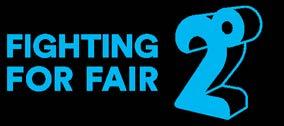
Switch telco. Stay connected. Get to Business. 2degrees.nz/business Somo.nz
Anew marine centre will deliver a positive impact on industry and the local community. The University of Waikato is developing this state-of-the-art marine research and education facility in Tauranga, estimated to open in 2027. It will be worldclass, based in a one-of-a-kind location where science and innovation meet community engagement, while conducting research into global challenges including climate change and sustainability.
There is no better place in New Zealand to build a marine research and education facility than the Bay of Plenty. Located in one of the fastest growing regions in New Zealand, its marine space sits alongside a high production horticultural zone, the largest port in the country and a strong aquaculture industry. There is unique access to a diverse marine environment, including catchments, beaches, lakes, Whakaari/White Island, and the largest working harbour in the country with strong global connections.
Researchers at the university’s
Coastal Marine Field Station are already working collaboratively across the region to create impact in industry and educate future generations about the wonders of the marine environment. The addition of a purpose-built facility, with specialised labs and interactive public displays, will further enhance potential to celebrate the area’s unique marine setting while ensuring continued protection of the environment.
Horticulture is a critical industry in the Bay of Plenty with sales of kiwifruit alone generating $2.6 billion in 2019 and expected to grow to $4 billion in 2027. As biosecurity issues and climate change are two of the greatest threats to this industry, Dr Marie Magnusson (associate professor in marine science and aquaculture) is developing innovative and organic solutions.
Dr Magnusson has been granted $11.4 million in funding from the Ministry of Business Innovation and Employment (MBIE) to research the way sugars in seaweed can protect our
primary sector from biosecurity threats, such as the bacterial disease Psa, and the effects of climate change.
New Zealand’s aquaculture industry is currently valued at $600 million based on salmon, mussels and oysters alone, all of which are produced in the Bay of Plenty. The University has strong expertise in this sector and supported the opening of Raukōkore Marine Research Centre in 2023. This base for research in the eastern Bay of Plenty contributes expertise to the growth of largescale aquaculture in the offshore waters of the area.
With an enhanced marine research facility in Tauranga, the university and the region will be in a strong position to capitalise on government intentions to increase the aquaculture industry’s revenue to $3 billion per year by 2035.
The new marine facility will also contribute to local growth by serving as a considerable tourist attraction. Located on the edge of Tauranga’s city centre, it will showcase the impact of research
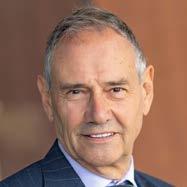
ALISTER
and share the wonders of the underwater world through aquariums, touch tanks, public marine dissections and a livestream of the harbour. It will draw local, national and international visitors with its dynamic approach to communicating science and include a café, marine-themed playground and public programmes to celebrate events including Seaweek and World Oceans Day.
This year, the field station and its staff have already hosted 19 school visits, education and
engagement events and we look forward to building on these connections through the new complex.
The University of Waikato is currently executing the development and design phase of the marine research and education centre since signing a lease with Tauranga City Council in June for a portion of land at Sulphur Point. Fundraising is underway and a project control group has been established.
As this exciting and unique opportunity is brought to life we look forward to working alongside local businesses, identifying opportunities for industry collaboration and community connection. If you are interested in supporting this one-of-a-kind initiative, please contact us at the university via www.waikato. ac.nz/marine-facility.
Professor Alister Jones is the Deputy Vice-Chancellor at the University of Waikato. He can be contacted at alister.jones@waikato.ac.nz
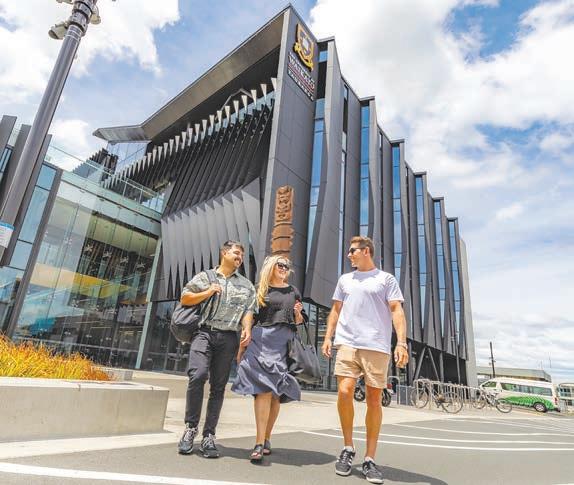


A recent accolade was the cherry on the top for Rotorua-based Triple Scoop. Claiming the Scion Innovation and Technology Award at the Rotorua Chamber of Commerce Business Awards, the business provides automation and AI-driven solutions.
Designed to help automate time-consuming tasks – with tools able to save up to five hours per employee per week – the company’s custom software improves productivity, its founder, Matt Browning, asserts.
“As businesses face rising costs and increasing pressure to do more with less, we are proud to be helping them leverage artificial intelligence and automation to streamline operations,” Browning said.
“Our team’s commitment to innovation means we are continuously developing the tools our clients need to stay competitive in a tough economic climate.”
From SMEs to government organisations, the company offers tailored, scalable solutions as well as AI training. Working with clients – and through a competition for high schools – Triple Scoop has been digging even deeper, developing new, custom software in response to their requirements.
Set to be renamed as the Incredible Software Agency, Triple Scoop has a growing client base and a team spanning seven countries and is now working in partnership with a US platform, Glide.
Visit www.rotoruachamber.co.nz for a full list of this year’s Rotorua Chamber of Commerce Business Award winners.
Thanks to a recently released report by Bayleys, those looking to make the right moves in the property market can be better prepared. The following summary provides insights into trends and what the future holds for the development land market.
Land prices have softened after a big boost.
Persistent shortages of development land have led to substantial growth in land prices over the past decade.
The downturn across the property markets has weakened demand and softened prices for land, although prices for land in highly sought-after locations have been surprisingly resilient.
However, infrastructure remains a challenge. Infrastructure constraints have been a major challenge for developers in delivering land and completed buildings to the market. The new government’s focus on cutting red tape may help with the supply of developable land in the longer term, but the time and cost to make improvements mean this will remain a challenge in the short term.
Lower values for com-
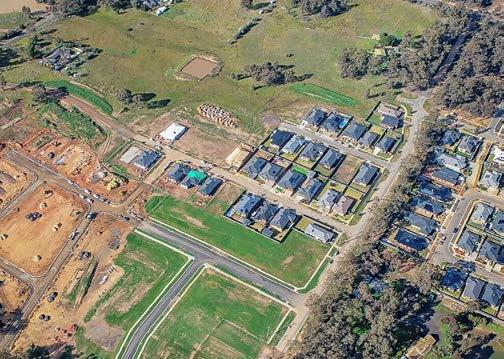
pleted assets and elevated construction costs mean feasibilities are struggling and difficult to stack up in the prevailing market conditions. This is translating to weaker demand for development land.
Prices for completed assets
are stabilising. Signals that inflation and long-term interest rates are peaking means asset prices are likely to stabilise after a period of softening. The residential market appears to have hit its floor and is showing signs of recovery.
However, low turnover in the commercial property market means trends have
been harder to gauge. Construction cost relief is on the horizon. Industry commentators are increasingly of the view that construction costs are starting to reduce. Cost relief is primarily being seen in labour costs, with material costs remaining elevated. Smart design and planning remain critical to achieving cost efficiencies and enabling feasibilities to stack.
Migration is building up demand. Surging migration is adding pressure, particularly within the housing market. This is mainly impacting the rental market given migrants tend to rent first and will typically be subject to the foreign buyer ban. Rising rents will encourage more activity by investors.
> The full New Zealand Development Land Market Insights report is accessible via www. bayleys.co.nz/insightsanddata

The North Island’s ‘golden triangle’ continues to glitter, attracting further attention from Sime Darby Motors NZ.
A 13,817 square metre site in Tauriko, Tauranga, has been chosen for a purpose-built truck service centre and Volvo Trucks NZ sales office as well as an external truck display area. The move follows the recent signing of a longterm lease in the Ruakura Super-
hub near Hamilton.
“These property investments are part of Sime Darby Motors’ ongoing programme of growth and investment,” Sime Darby’s Pat McKenna confirmed.
“Our Tauriko and Ruakura developments represent significant investment in a key area for our truck servicing customers, as [according to NZTA] the Golden Triangle sees 56 per cent
of New Zealand’s total freight movement.”
As Tauranga accounts for 40% of New Zealand’s total freight movement by tonnage, the Tauriko was an obvious choice.
With easy access to major transport corridors, it sits within a growing hub of commercial, industrial, and residential developments in the area and provides the company a further foothold in

the Tauranga/Hamilton/Auckland region.
“This is another step in our on-going programme of investment in New Zealand, positioning
New Zealand’s large format retail (LFR) sector remains a resilient and appealing segment within commercial real estate buoyed by key market trends, PMG reveals.
With sustained demand for household goods, home improvement supplies and other large-scale items, large format retail (LFR) is well positioned for future growth. The country’s population grew by 2.8 per cent in 20231, largely due to migration, and this trend is expected to continue, supporting LFR through increased foot traffic and sales potential.
Several factors set large format retail apart in New Zealand’s retail landscape. These properties cater to retailers who need ample space to display and store goods customers often prefer to inspect in person, such as building and DIY materials, home appliances and furniture.
This need for physical retail space has helped large format retail remain resilient in an increasingly ecommerce-driven world, offering consumers a tangible, hands-on shopping experi-
ence that online platforms can’t fully replicate.
Key urban areas, such as Auckland, Christchurch, and Hamilton, have seen the most transactions of LFR in the last five years2
These regions are benefiting from population growth and stable economic fundamentals which have supported steady demand. While consumer confidence remains cautious due to inflation and interest rate pressures, spending on essential household goods and DIY products has held up, contributing to the long-term resilience of LFR properties.
LFR can present a stable, longterm opportunity for investors. While growth has slowed over
the past few years, LFR properties remain well positioned for gradual recovery and future expansion. Between 2018 and 2023, LFR retailers in New Zealand recorded strong sales growth, reflecting ongoing demand for these properties.
Tenants in this sector are typically well established national and multinational brands with long-term leases, which provide reliable rental income and help minimise vacancy risk.
For example, Mitre 10 and Kmart, key players in the home improvement and housewares sectors, recorded sales growth of 110%3 and 106%4 respectively during this period, underscoring the enduring strength of their brands and the importance of large format retail.
Private investors, particularly domestic buyers, have driven the majority of large format retail transactions in New Zealand over


us for future growth,”
ken early 2025 with the site completed towards the end of the year.

the past five years, accounting for roughly 70% of total investment activity5
This demonstrates continued confidence in the sector’s potential for regular returns, especially in such areas as Auckland and Christchurch, where population growth supports sustained demand for large format retail spaces.
PMG is currently offering wholesale investors6 a large format retail investment opportunity in Prestons, Christchurch. The new development will be anchored by Mitre 10, one of New Zealand’s leading home improvement retailers, on a 20 year lease.
As Christchurch continues to grow, with a population increase of 1.5% in 20237, this property
is well positioned to serve as a key retail hub. This represents a prime opportunity for wholesale investors to gain exposure to a sector with the potential for stable, long-term potential. To learn more about this wholesale investment opportunity and how it could enhance your portfolio, visit pmgfunds. co.nz/invest or contact PMG for further details.
Matt McHardy is GM Investor Relationships at PMG Funds. He can be reached on matt.mchardy@pmgfunds.co.nz

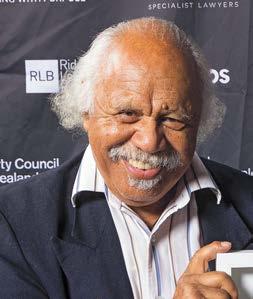
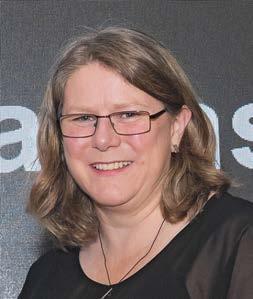
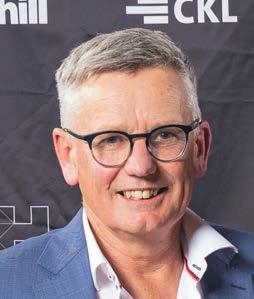

AwardwinnersBuddyMikaere,JudithMakinson,DougSaunders,BillHolland. PhotossuppliedStephenBarker/BarkerPhotography.
Local property stars from the Bay of Plenty and Waikato shone at the recent Central Property People Awards. “It’s an honour to recognise the people behind projects transforming our communities,” Leonie Freeman from the Property Council NZ said. “These individuals and teams are creating the spaces where we live, work, and play, and it’s a privilege to celebrate their achievements.”
Waikato property expert, Judith Makinson of CKL, claimed the prestigious Colliers Project Leaders Supreme Award as well as the Beca Women in Property Award. However, many of the Bay’s best also made their mark.
Groundbreaking work on one of the Bay of Plenty’s first mass timber buildings (at Metlifecare Somervale Village) saw the Fosters team hammer home the Boffa Miskell Excellence in Sustainability Award. The team surpassed sustainability targets diverting more than 80 per cent of waste.
Another local project, The Marine Parade Coastal Pathway, earned its team (including Tauranga City Council and partners) the prestigious Chow:Hill Urban Design Award.
Bill Holland of Holland Beckett and Waikato’s Doug Sanders received the Hawkins Long Service Awards. Bill was a worthy winner due to his dedication to the community, notably through his role in establishing the Acorn Foundation and promoting private philanthropy, the judging panel concluded.
“Bill’s work with local organisations

TheFostersteam–BoffaMiskellExcellenceinSustainabilityawardwinnersincludingRyan Tesselaar(topleft)winneroftheRiderLevettBucknallYoungAchieveroftheYearAward.
such as TECT, Rotary, and Priority One has made him an inspiring leader, motivating others to contribute to lasting, positive change.”
In addition, Tauranga’s Buddy Mikaere claimed the Fosters Outstanding Leadership Award and Ryan Tesselaar of Fosters was named Rider Levett Bucknall Young Achiever of the Year.
“With boundless energy and a genuine passion for positive change, Buddy has set an exemplary benchmark for leadership in our industry,” judges said.
“Ryan’s impressive leadership trajectory combined with his dedication to the growth and development of others makes him a standout future leader in the property sector.”
Colliers Project Leaders Supreme Excellence Award & Beca Women in Property Award: Judith Makinson, CKL
Rider Levett Bucknall Young Achiever of the Year Award: Ryan Tesselaar, Fosters
Chow:Hill Architects Urban Design Award: Marine Parade Coastal Pathway Team
CKL Property Professional of the Year Award: Miko Brouwer, RDT Pacific
Fosters Outstanding Leadership Award: Buddy Mikaere, Consultant
Veros Best Team Award: Te Pā Project Team – The University of Waikato and partners
Boffa Miskell Excellence in Sustainability Award: The Fosters Team for Metlifecare Somervale Village Redevelopment, Stage 1
Hawkins Long Service Award (Waikato): Doug Saunders, CBRE
Hawkins Long Service Award (Bay of Plenty): Bill Holland, Holland Beckett
Harkness Henry Judges’ Choice Award: Te Rapa Gateway Project Team
Visit www.propertynz.co.nz for a complete list of winners and more information.

November is a great time to pause for a moment and recharge the mind, body and spirit as we sprint toward the end of 2024, as Pete Wales discovered.
In what has been a stressful year for many people in Aotearoa, New Zealand, it’s a good time to harness the healing power of the Cultural Wellness
– Restorative Journey (Wai Whakaora) experience at Wai Ariki Hot Springs and Spa, a premium cultural and wellness centre in Rotorua.
Recently, I embarked on this rejuvenating, transformative, therapeutic experience of geothermal heat, water, mud and steam. The process takes place over five stages, transcending the physical and embracing the spiritual and cultural essence of the Māori people.
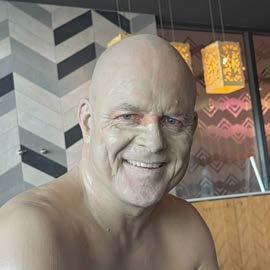
The journey begins with a karakia (Māori incantation and prayer used to evoke spiritual guidance and protection) with a welcoming and helpful guided instructional tour of each of the five stages journey (total two and a half hours) and how to benefit from them. Each stage has its own purpose but all are designed to reinvigorate and revitalise the mind, body and spirit in a set order.
• Stage 1, Waterfall Showers (Te Iringa): a succession of soft hot and cold streams of water opens awareness and begins the process.
• Stage 2, Tongariro Fire and Ice Caves (Te Ahi Tupua): this series of hot and cold, wet and dry experiences in three saunas, a cold plunge stream and ice room with a self-activating ice bucket. This is a truly stimulating part of the journey.

• Stage 3, The Geothermal Pools (Te Taiwhanga Matua): features five pools –herbal, hydrotherapy, two mineral alkaline and a cold plunge. I spent quite some time in the pools, enjoying the various benefits they each had to offer. For me, this was the most relaxing part of the visit.
• Stage 4, Geothermal Mud Lounge (Te Pae Paru): presenting Papatūānuku (the land), this offers a unique experience during which naturally occurring mud (produced in Rotorua) nourishes the skin and connects us with the land. Mud is applied all over the body and left to dry before guests move on to the final stage.
Stage 5, Steam Room (Kohu
is a steam room like no other! Its large, round, black onyx-coloured tiled room with neon lights made me feel like I was stepping into a nightclub! The steam goes to work on mud-caked bodies before visitors are washed clean using the hot shower stations across the steam room’s round, circular wall and centre plinth. The entire Wai Whakaora, Restorative Journey, was an unhurried, rejuvenating experience that will stay with me for a long time. I encourage readers to invest in revivifying their minds, bodies and spirits, especially at this time of year – you won’t be disappointed and I’ll certainly be back!
For more information call 07 349 7111 or visit www.wai-ariki.co.nz
As cruise ship season sees more visitors arrive in port, hopes are high that all aboard will hop on and off at local businesses when heading ashore.
Operated by family-owned transport and tourism company, Tranzit Coachlines, the Hop On Hop Off Tauranga bus service has received a refresh with a new logo, new uniforms and other improvements to enhance its visitor experience.
The 90 minute service visits key attractions in Tauranga and Mount Maunganui delivering entertaining and educational commentary along the way.
“Cruise ships play a key role in bringing international visitors and our dedicated cruise team takes a lot of pride in welcoming them aboard our services, ensuring they have a great experience,” Jamie Jensen from Tranzit Coachlines
confirmed. “To further improve this experience, we’ve worked closely with… all attraction stakeholders to refine and update the tour.”
The service provides a flexible, lowcost option for visitors, Tourism Bay of Plenty’s Oscar Nathan adds.
“It’s important that our destination caters for a wide range of travel prefer ences. This service is an enjoyable and sustainable way to move large groups of passengers to where they want to go.”
On cruise days, the service departs every 30 minutes from just outside the Port of Tauranga, stopping at Mount Maunganui main street village, Bayfair shopping Centre, Classic Flyers avia tion centre, The Elms Heritage House, Tauranga city centre and The Historic Village.
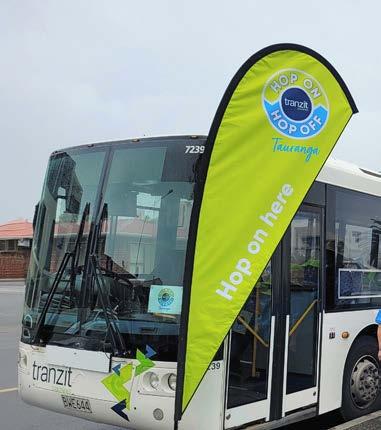
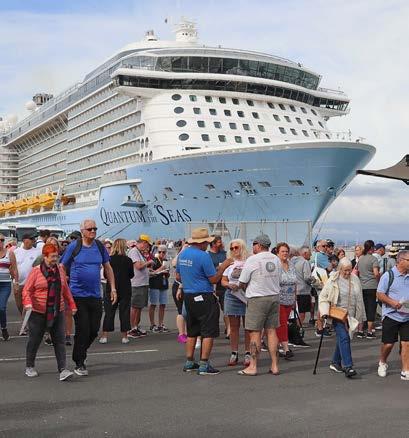
Bay of Plenty businesses may have much to celebrate when the boats come in, but an anticipated drop in the number of cruise ship visitors and lack of economic data could weigh down expectations.
“The New Zealand cruise sector is facing some challenges right now,” Tourism Bay of Plenty’s Oscar Nathan explains. “Cruise ship numbers rebounded nicely when our border reopened post-Covid, but rising operating and regulatory costs, Northern Hemisphere route disruptions and tough global competition means we’re expecting a 23 per cent drop in the number of cruise ship visits this coming season.”
Nathan’s comments follow the recent release of the Coastal Bay of Plenty Cruise Study, intended to investigate the cruise sector’s value locally.
Despite room for improvement, the study found that 86% of residents near the Port of Tauranga and in Mount Maunganui believe the cruise sector has a positive impact in the region.
“Tauranga continues to rate as a popular stop on cruise ship itineraries due to the ease of passenger disembarkation, relaxed coastal lifestyle, the warm welcome passengers experience while they’re here, the unique foodie flavours they can savour and local shopping options they can explore.”
However, the study highlighted a lack of data regarding passenger and crew spending, vessel expenditure and GST contributions. Tourism Bay of Plenty is working with the New Zealand Cruise Association (NZCA), councils, MBIE and other key stakeholders to address this and other aspects revealed by the study, Nathan confirmed.
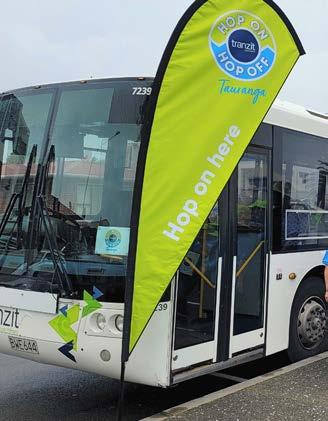
“[It’s] difficult to quantify the value of cruise in our region. NZCA is working hard to obtain and release this data within the next few months, and we’ll then conduct a cost-benefit analysis to help inform further investment decisions in our region.”
In the meantime, the study is a valuable resource that reinforces the positive economic and social impact of cruise tourism in the region, NZCA’s Jacqui Lloyd adds.
“It not only aligns with the national cruise strategy but also fits into the broader international framework, highlighting the opportunities for New Zealand and the Bay of Plenty in the growing global cruise industry,” Lloyd said. “We wish the Bay a successful and prosperous season ahead.”
Visit www.bayofplentynz.com to view the Coastal Bay of Plenty Cruise Study in its entirety.
Together, we’re sending less to landfill and more to farms and orchards. With over 9 million kgs of our food scraps collected and composted so far, and counting.
Sending less food scraps to landfill also means we’re reducing our emissions.
So, thanks Tauranga.
tauranga.govt.nz/
